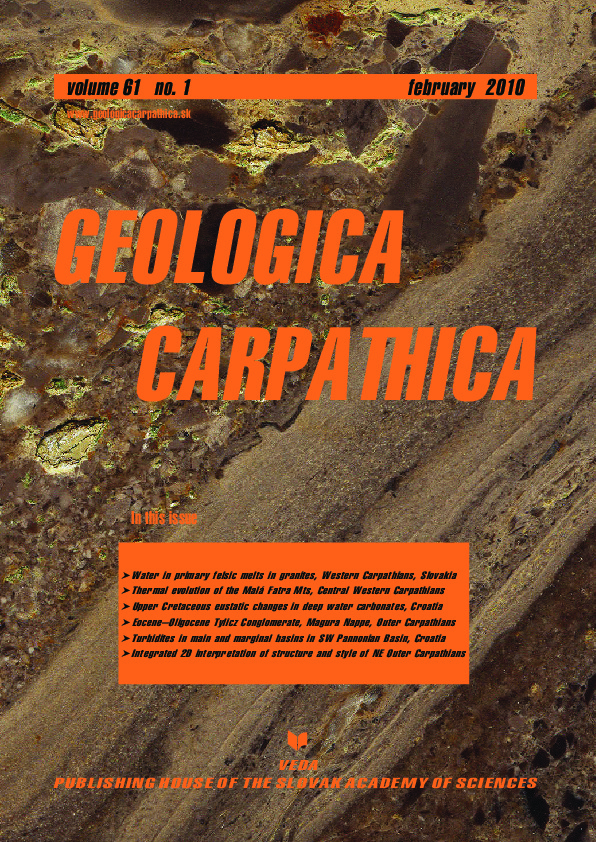High-frequency sea-level changes recorded in deep-water carbonates of the Upper Cretaceous Dol Formation (island of Brac, Croatia)
Published: Feb 2010
Pages: 29 - 38
DOI: https://doi.org/10.2478/v10096-009-0042-z
Authors: DAMIR BUCKOVIC, MAJA MARTINUS, DUJE KUKOC, BLANKA CVETKO TESOVIC, IVAN GUSIC
Abstract: The upper part of the Middle Coniacian/Santonian–Middle Campanian deep-water Dol Formation of the island of Brac is composed of countless fine-grained allodapic intercalations deposited in an intraplatform trough. Within the studied section 13 beds can be distinguished, each defined by its lower part built up of dark grey limestone with abundance of branched, horizontally to subhorizontally oriented burrows, and the upper part, in which the light grey to white limestone contains larger burrows, rarely branched, showing no preferential orientation. The lower, dark grey, intensively bioturbated levels are interpreted as intervals formed during high-frequency sea-level highstands, while the upper, light grey-to-white levels are interpreted as intervals formed during the high-frequency sea-level lowstands. Cyclic alternation of these two intervals within the fine-grained allodapic beds is interpreted as the interaction between the amount of carbonate production on the platform margin and the periodicity and intensity of shedding and deposition in the distal part of toe-of-slope environment, which is governed by Milankovitch-band high frequency sea-level changes.
Keywords: Campanian, Croatia, Adriatic-Dinaric carbonate platform, Dol Formation, carbonate sedimentology, high-frequency sea-level changes, intraplatform trough
Download PDF documentVolume 61 no. 1 / February 2010
KATARINA BONOVA, IGOR BROSKA, IGOR PETRIK
Biotite from Cierna hora Mountains granitoids (Western Carpathians, Slovakia) and estimation of water contents in granitoid meltsMARTIN DANISIK, MILAN KOHUT, IGOR BROSKA, WOLFGANG FRISCH
Thermal evolution of the Mala Fatra Mountains (Central Western Carpathians): insights from zircon and apatite fission track thermochronologyDAMIR BUCKOVIC, MAJA MARTINUS, DUJE KUKOC, BLANKA CVETKO TESOVIC, IVAN GUSIC
High-frequency sea-level changes recorded in deep-water carbonates of the Upper Cretaceous Dol Formation (island of Brac, Croatia)BARBARA OLSZEWSKA, NESTOR OSZCZYPKO
The geological position, sedimentary record and composition of the Tylicz Conglomerate (Late Eocene–Oligocene): stratigraphical and paleogeographical implications (Magura Nappe, Polish Outer Carpathians)BORIS VRBANAC, JOSIPA VELIC, TOMISLAV MALVIC
Sedimentation of deep-water turbidites in the SW part of the Pannonian BasinJAN KUSMIEREK
Subsurface structure and tectonic style of the NE Outer Carpathians (Poland) on the basis of integrated 2D interpretation of geological and geophysical images




